Dawn Chorus: The Traveling Birder in Northeast Colombia
14 min readIf you told me twenty years ago that I’d be birding in Colombia I’d have told you that you were out of your mind. Colombia was full of drug lords and rebels fighting the government over cocaine fields, like this guy:

Since then, Colombia has become a stable, friendly place. And I’ve visited there twice.
For the birder, Colombia is just paradise. Colombia has more bird species than any other country, including huge countries like Brazil or China. There are roughly 1,950 species found in Colombia and about 80 of them are endemic to Colombia. Why is this?
- Colombia has three ranges of the Andes running down its middle. Different species breed at different elevations, so this large variation in elevation has different species in the different habitats.
- Additionally, each of those ranges are tall enough to keep birds on the east side of one range from crossing to the west side and vice versa. That creates new species.
- Colombia has coasts on both the Pacific Ocean and the Caribbean with the different species found in each and different migrants from North America on each coast.
- Colombia has a portion of the Amazon Basin with all the rainforest species that entails.
- The northeast of Colombia has a separate mountain range, the Santa Martas, that isn’t connected to the main part of the Andes. Birds found there developed separately from the rest of the mountains, which again means new species.
- The Santa Martas block the rains from reaching the far northeast coast. That creates a very dry scrubby habitat (shared with NW Venezuela), which creates even more unique species.
I had done a trip to central Colombia 10 years ago which took in some of the Andes around Bogotá and Medellin, but because I was working and had limited vacation time, I wasn’t able to visit the Santa Marta area with all its endemic birds. My trip in February remedied that oversight.
For those unfamiliar with Colombia here’s a map of the whole country:
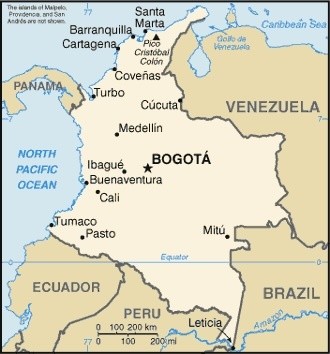
This trip took in the tiny part of the country in the far north. Pico Cristobal Colon is in the Santa Marta Mountains. It’s the highest point in Colombia at 5,780m (18,800 ft). The long rounded finger to the northeast of that is the Guajira Peninsula.
We started in Barranquilla, the 4th largest city in Colombia and the birthplace of Shakira and Sofia Vergara. Fun fact: There’s actually a huge gold statue of Shakira on the Malecon (riverside promenade) in Barranquilla.
Our exact route is here:
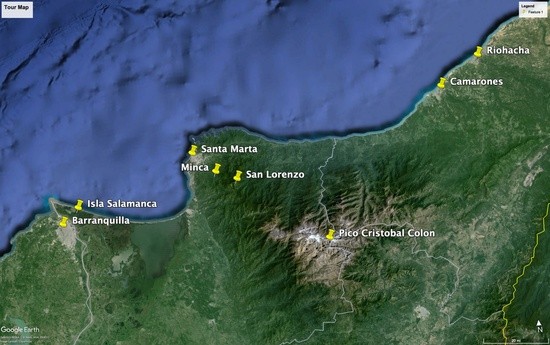
From Barranquilla we made a day trip across the Magdalena River to the wetlands on the Isla Salamanca, before we drove all the way east to Riohacha and Camarones for the dry country species of the Guajira Peninsula. After that we doubled back to the mountains above the city of Santa Marta for the mid-level elevation in Minca and the high elevation endemics at San Lorenzo, before heading back to Barranquilla to fly home.
All of my sightings and pictures are in an eBird “trip report” here. But this chorus hopes to pick out some of the better ones and share some of details and memories from the trip. Enjoy!
—————————-
The trip started with a short “fun outing” to the Isla Salamanca National Park, just across the mighty Magdalena River from Barranquilla. Isla Salamanca is a marshy island with a lot of mangroves, but there are some drier parts where birds of open country savanna can be found.
One of the first lifers for the trip was Russet-throated Puffbird:

It’s found in Northern Colombia and Western Venezuela. Puffbirds are in a family related to woodpeckers. They tend to sit very still for a long time and then sally out for large insects or lizards. Their big eyes and stationary behavior have earned them the nickname “Juan Bobo” (Juan the fool) in Colombia.
We also saw another puffbird, Pied Puffbird:
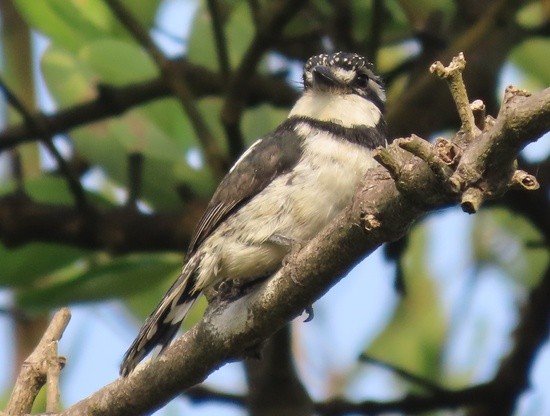
This is a much smaller bird than the Russet-throated. It’s much more widespread, too – it’s found all the way from Nicaragua to Bolivia and northeast Brazil, although I’d only seen them once before in Panama. They’re usually hidden deep in the canopy like other puffbirds, but this was one of two that were sitting out in the open.
One of the more widespread families in Latin America is the wrens, and Colombia does not disappoint. On Isla Salamanca one of the wrens we saw was Bicolored Wren:
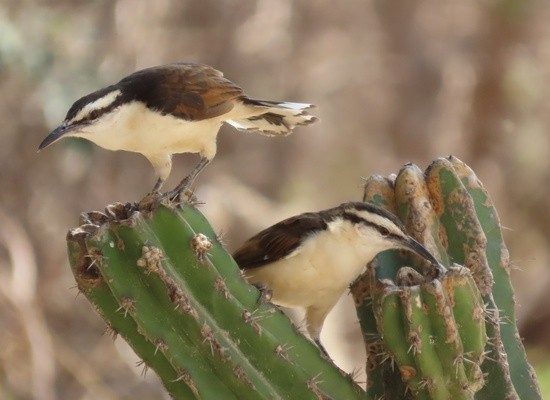
They’re found in Colombia, Venezuela, and Guyana (with a small population in Brazil). These are the largest wrens in South America; larger even than the North American Cactus Wren. I’d seen them before in Guyana, but we saw them several days in the drier Colombian Lowlands.
The only hummingbird we saw this day was a special one, the Sapphire-bellied Hummingbird:
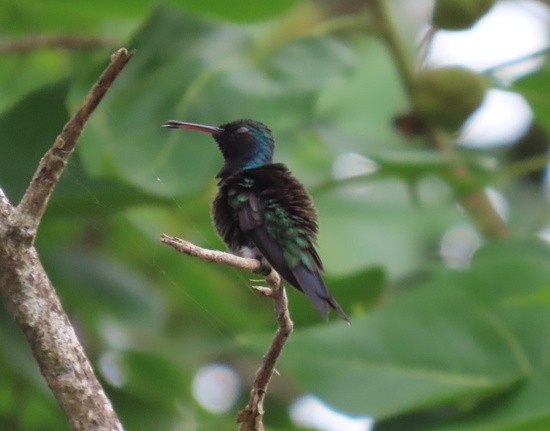
This bird is only found in a tiny area between Isla Salamanca and Cienaga on the north shore of Colombia. It’s highly endangered, because of habitat loss. It’s estimated that there are less than 500 of them, so it was a major target of the trip. Unfortunately, the picture doesn’t do it justice – they have a deep blue throat and breast.
I can’t pass up a raptor, and this Black-collared Hawk was no exception:
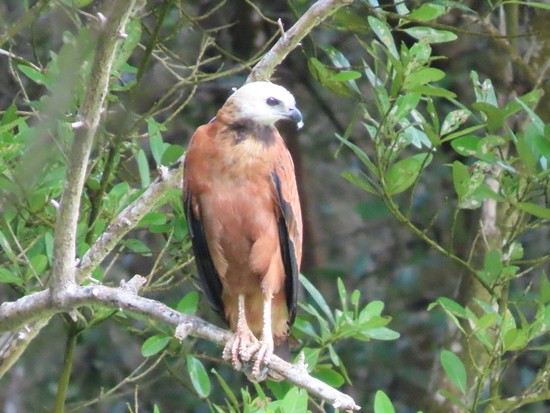
They’re found through tropical America, usually in marshes and wetlands. They eat fish and amphibians. This was the 5th country where I’ve seen one.
My favorite picture from Isla Salamanca is this Common Tody-flycatcher:
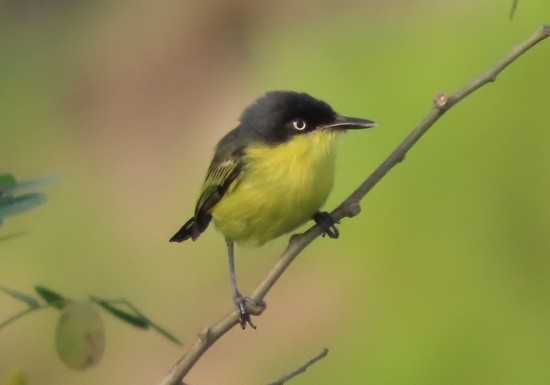
Common Tody-fly is another widespread bird – from Mexico to Southern Brazil. Tody-flycatchers are small (less than 4” / 10 cm) with large bills. Usually when you see them, you’re looking straight up their butt, so seeing this guy below eye-level was a real treat.
In the mangroves, we picked up White-headed Marsh-tyrant:
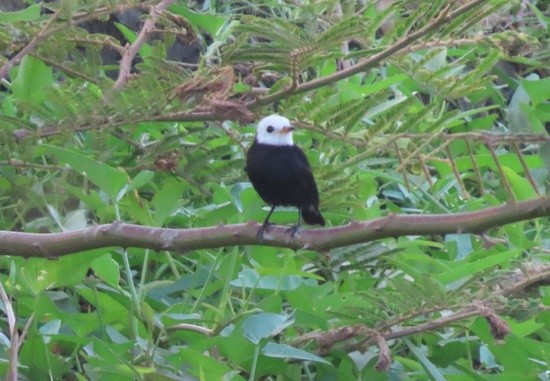
As you’d assume from the name, these little flycatchers specialize in wet habitats, but unlike most flycatchers, they stay low to the ground. It’s found throughout the lowlands of northern and eastern South America.
The official birding tour started the next day in Barranquilla with a visit to the waterfront promenade. We weren’t there to see the Shakira statue though. We were after Northern Screamer:
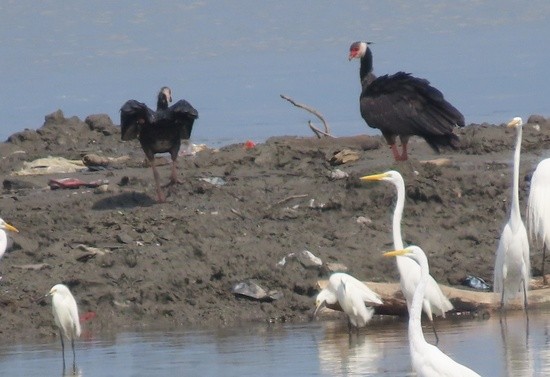
The screamers are a small family found only in South America. They were once thought to be related to turkeys and pheasants, but recent studies show they’re more closely related to ducks. Northern Screamer is one of only three species of screamers. They are found only in Colombia and Venezuela and are considered threatened.
Far more common is the Smooth-billed Ani:
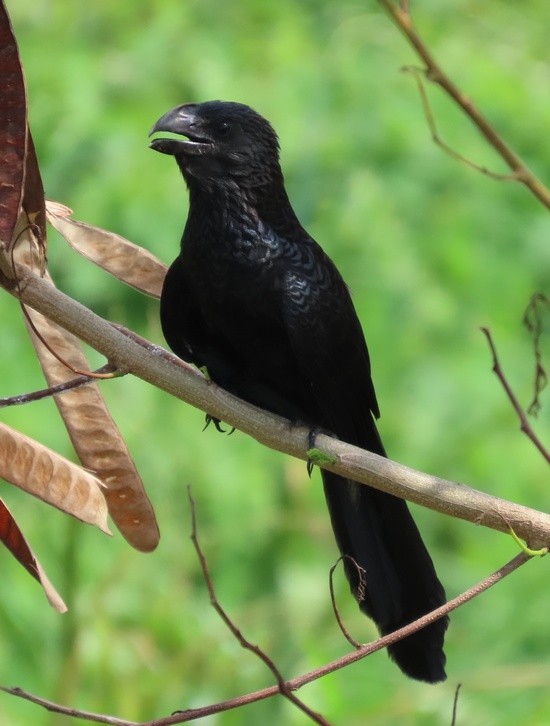
Smooth-billed Anis are a kind of cuckoo found throughout the Caribbean and South America, with even a tiny population in South Florida. They tend to travel in small flocks and are usually found in open brushy habitat.
Raptor time again! Here’s a Common Black-hawk:
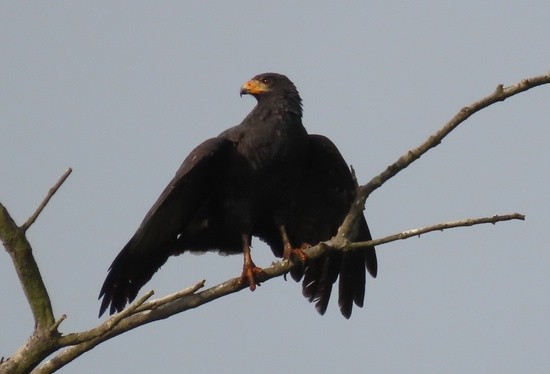
We saw her at a new mangrove boardwalk park on Isla Salamanca. How can you tell it’s a female? You can’t. The males and females are identical. But we cheated – we saw a pair mating before the male flew off. The park where we saw them was unique: you’re not allowed to bring plastic water bottles into the park. We had to leave ours at the ranger station and pick them up on the way out.
Another common species of the mangroves is Great-tailed Grackle:
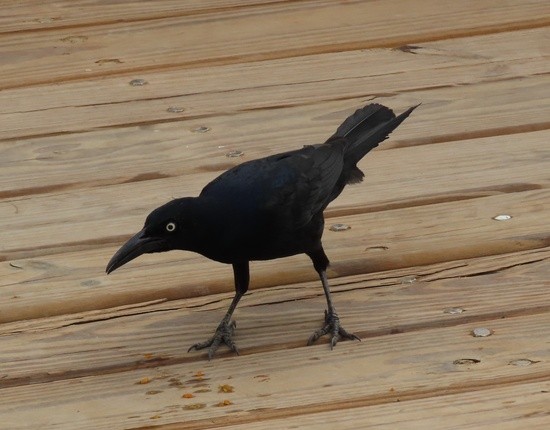
This is actually a different subspecies from the one we have in the US. It’s significantly smaller. But as you can see, they’re just as gregarious and people-friendly as our birds.
After that, it was a long drive out to the Guajira peninsula with only a stop for lunch:
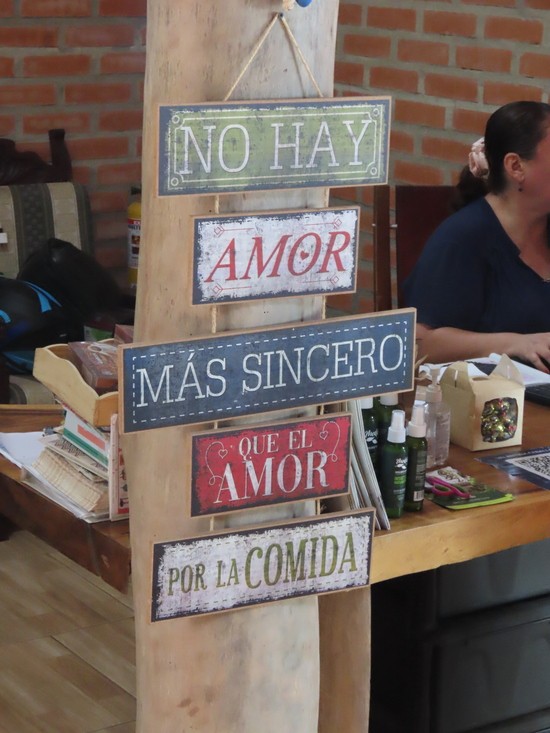
Translation: There is no love more sincere than the love of food. So true.
As I noted, the Guajira Peninsula is actually in the rain shadow of the Santa Marta Mountains, so it’s a very dry scrubby place.

As you can see, there are even cacti. And like the SW US desert, we found some great birds in the dry scrub.
A key target of the tour was Vermillion Cardinal:
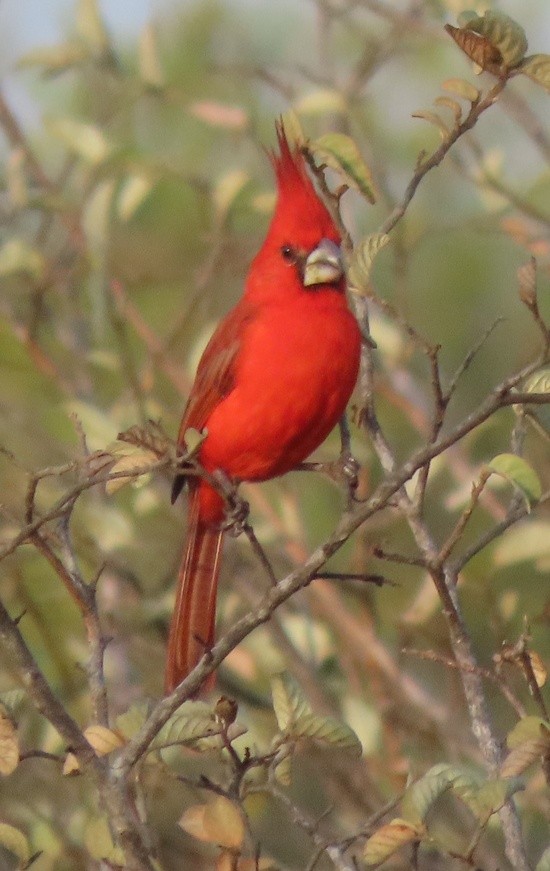
Stunning, huh? They’re mostly found in the Guajira and western Venezuela. It’s in the genus Cardinalis, just like the Northern Cardinal and Pyrrhuloxia of North America, but the only one of the three found in South America.
Another burst of color in the Guajira was the Yellow Oriole:
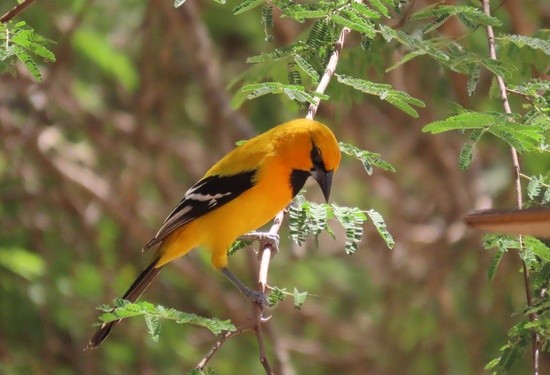
Yellow Orioles are found throughout the northern coast of South America, from Colombia to the Mouth of the Amazon in Brazil.
Here’s an “ant” bird for nook, a Black-backed Antshrike:
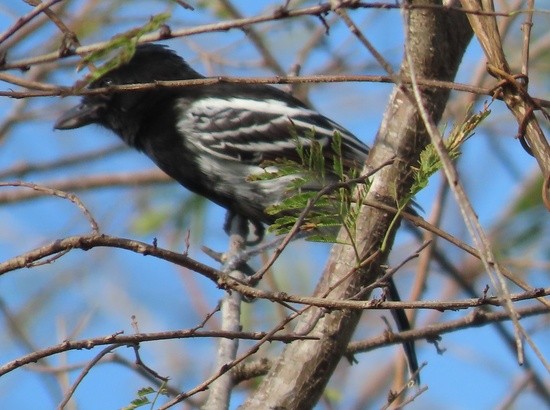
I was surprised to find an ant-following bird in this brushy habitat, since I think of them as being birds of the wetter tropics. This is yet another Colombia-Venezuela specialty, so it was a lifer.
Of course, here’s the obligatory raptor from the Guajira, Roadside Hawk:
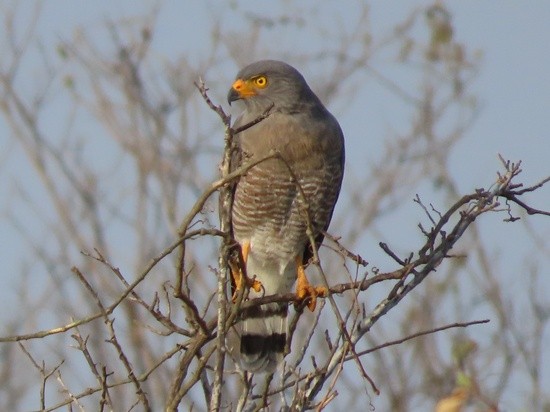
If you’ve ever been birding in Latin America, you’ve probably seen a Roadside Hawk. They’re found from Mexico all the way through to the Argentinian Pampas. I’ve seen it in 12 different countries. FYI, “Roadside” is really a misnomer – they evolved to hunt in the openings along rivers, not roads.
Unexpectedly, we also found a kind of shorebird in the dry scrub, a Double-striped Thick-knee:
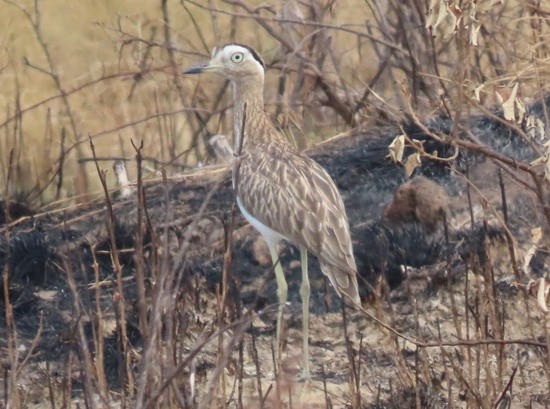
Thick-knees are in the same order as shorebirds, but are in a separate family. They’re large birds of the open savannah and fields. In Europe, thick-knees are known as stone-curlews because they’re found in stony fields and pastures. And I’ve always wondered where the “double-stripe” is on these birds. I learned on this trip that it refers to the dark stripes on their heads.
One interesting bird we saw was Groove-billed Ani:
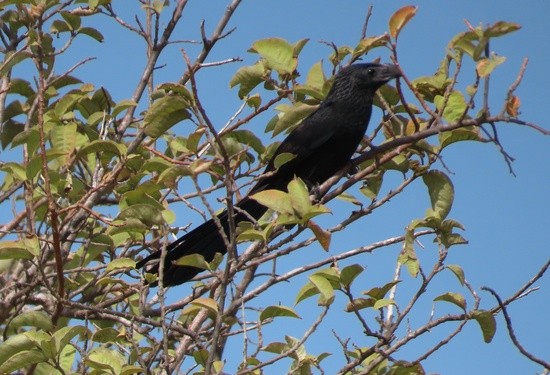
While Groove-billed Ani is a very common bird in Latin America, the birds in Colombia and Venezuela sound absolutely nothing like the ones anywhere else. Our guide said he thinks it should be a separate species (and he believes that someone is doing the homework to prove it). We’ll see.
We also went to a small lodge with a set of feeders, which gave us a chance at some photos of some more species while relaxing in the shade drinking lemonade. One specialty we saw there was Orinocan Saltator:
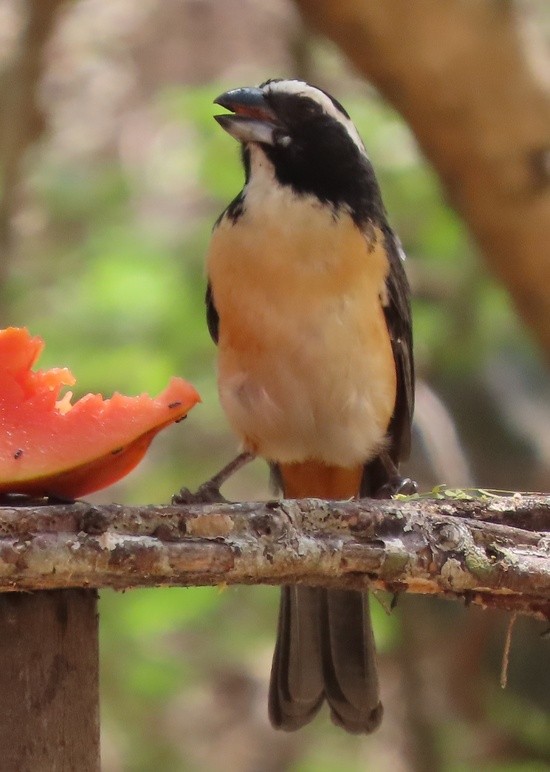
Saltators like this one are a kind of tanager with large finch-like bills. Orinocan Saltator is found primarily in Venezuela north of the Orinoco River (hence the name) but they extend into Colombia in the Guajira. It was also a lifer.
We also had a Red-crowned Woodpecker coming to the feeder:
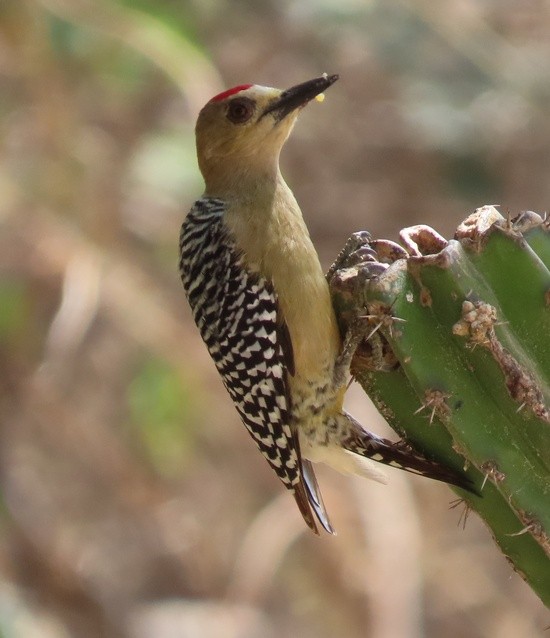
As you can probably see, In Central and South America it’s the Caribbean coastal equivalent of our Red-bellied Woodpecker . The cactus it’s perched on is actually the feeder. They put seed in the top of it.
We only saw one hummingbird in the Guajira, Buffy Hummingbird:
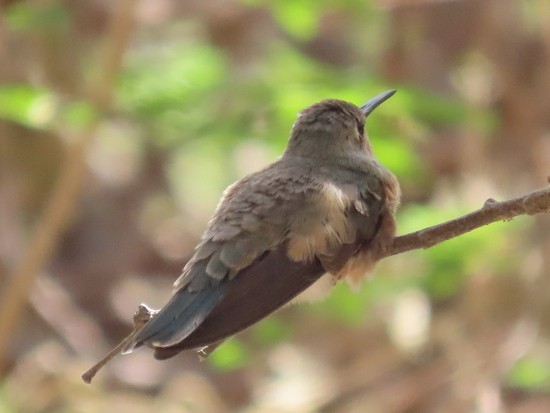
As hummingbirds go, it’s not very exciting, but it was a lifer. And as a regional endemic, it was definitely a tour target.
Another rather plain bird is the Pileated Finch:
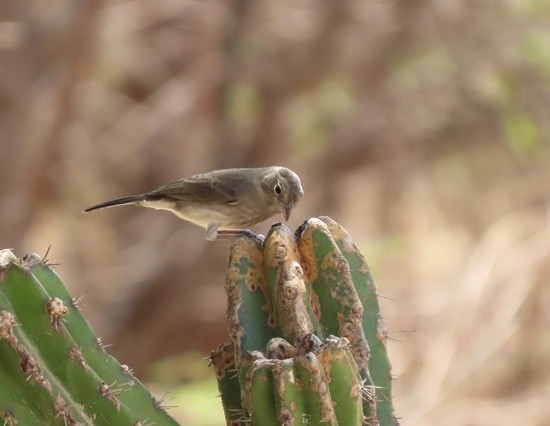
This is a female. The male has a black crown stripe…that hides a bright red crest, like a Ruby-crowned Kinglet. Unfortunately, we never saw a male excited enough to show his crest.
On the other hand, shades of brown can be quite striking, such as with this Scaled Dove:

They’re a ground-dove, and essentially the South American equivalent to the North and Central American Inca Dove. This means that Inca Dove is badly named. It should be called Maya Dove or Aztec Dove.
Of course, no visit to the Caribbean coast is complete without a visit to a coastal lagoon. It’s called “padding the trip list.” While we saw lots of terns, gulls, shorebirds, large waders, and distant flamingos, the star of the visit was this ibis:
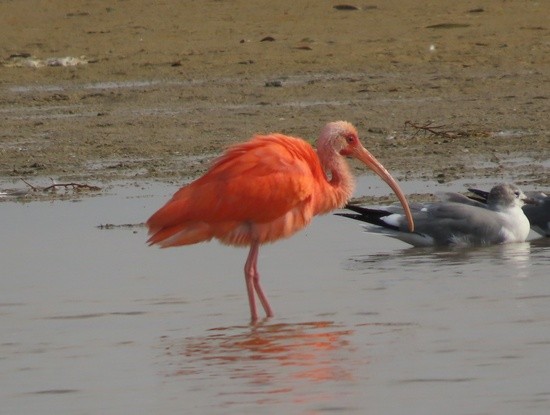
We were hoping for Scarlet Ibis, but this one is hybrid of White Ibis and Scarlet Ibis. Note the pale pink head.
From there we headed to the Santa Marta Mountains, although the guide had one more trip up his sleeve, Bare-eyed Pigeon:
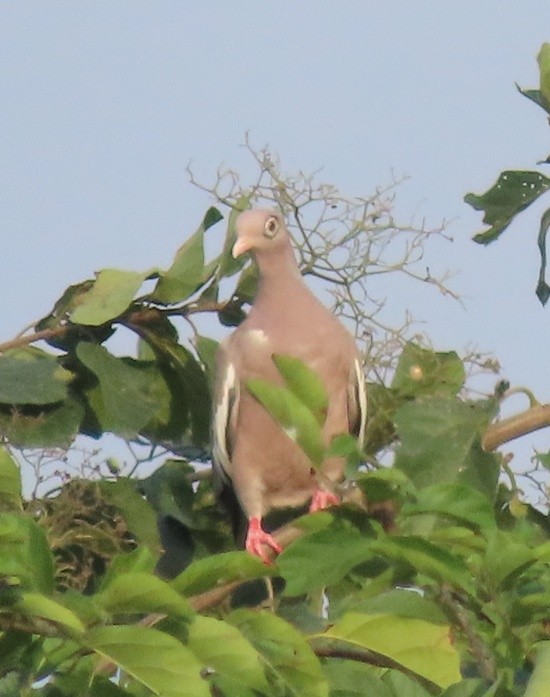
We had just passed through a toll booth outside Santa Marta when we pulled over and found them. It’s a known stake-out for the species, yet another regional endemic. Although it looks kind-of like a White-winged Dove, they’re not very closely related.
From there we headed into the Santa Marta foothills, to the small town of Minca. I always thought of Minca as a birdwatching location, but it’s been discovered by “backpackers” and is turning into quite a touristy little town:
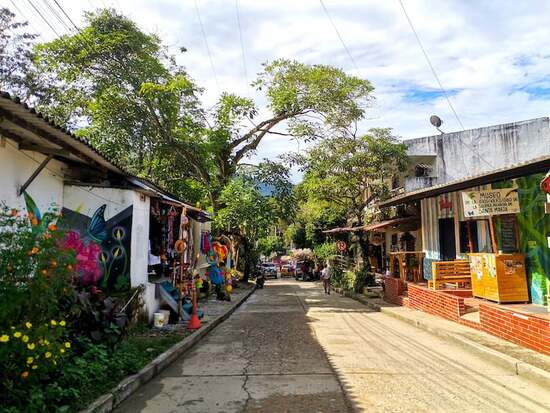
Despite that, it’s small enough that you can get away from the crowds and find birds, many of which are shared with the Central American tropics.
One of the big gaudy ones we saw near Minca is Keel-billed Toucan:
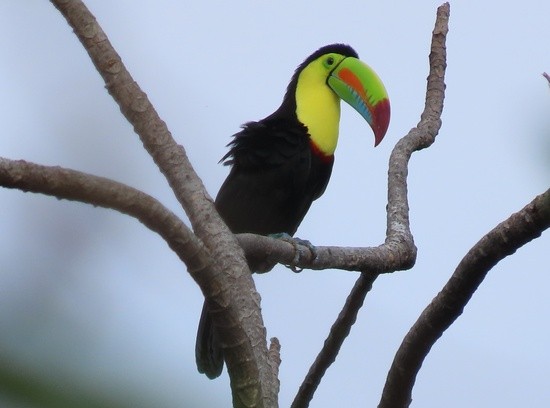
They’re a widespread species, found from Southern Mexico to NE South America.
An even more widespread species is Tropical Kingbird:
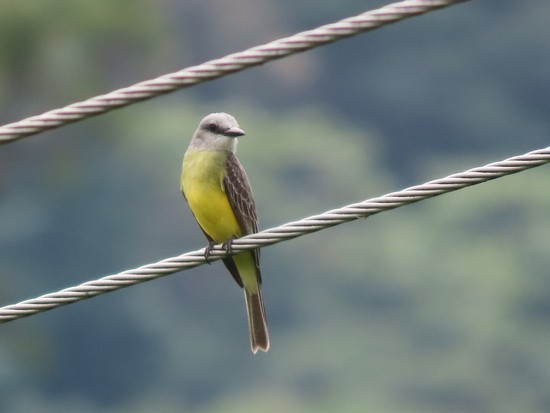
Affectionately known as a T.K., they’re probably one of the most widespread and common species in the Americas. They’re one of those species that you eventually stop paying attention to, despite the fact that they’re quite pretty. They’re found all the way from Southern Texas to Central Argentina. I’ve even seen a vagrant T.K. in Pennsylvania.
A less common flycatcher is the Dusky-capped Flycatcher:
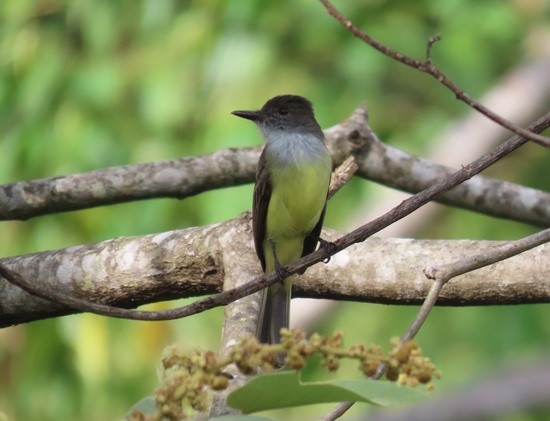
This myiarchus flycatcher is found from Arizona to the southern Amazon Basin. However, this bird was the only one we saw on the trip.
One of the more beautiful families in the neotropics is the trogons. This is a Gartered Trogon:
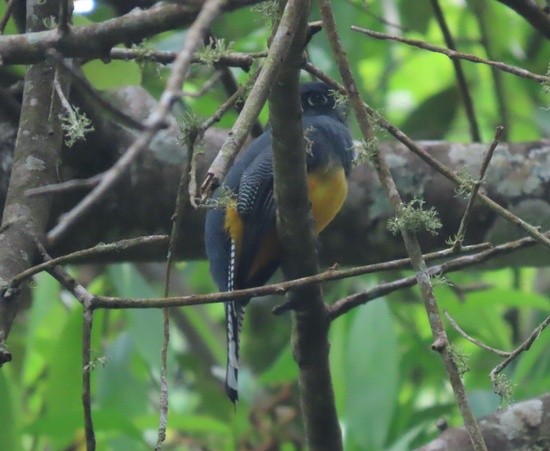
Gartered Trogon became a full species a while back when Violaceous Trogon was split three ways into Gartered, Ecuadorian, and Andean. This Gartered is a female. The male is a brighter blue with a yellow eye ring.
Of course in the neotropics where you have birders, you have lodges with bird feeders, and ours was no exception. In Colombia, that means hummingbirds. A regionally endemic hummingbird is the Steely-vented Hummingbird:

They’re named for the blue undertail you see here. They’re mostly found in Colombia but their range just barely extends into Western Venezuela.
More widespread is the White-necked Jacobin:
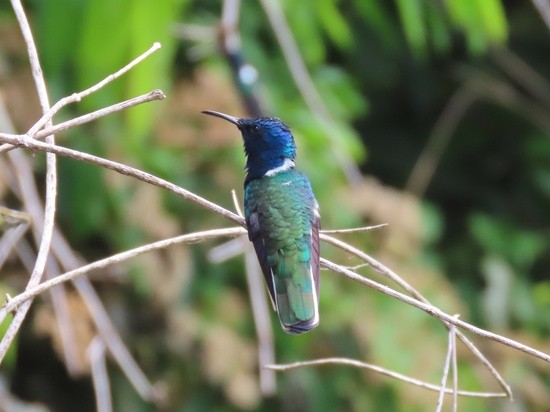
The Rufous-tailed Hummingbird:
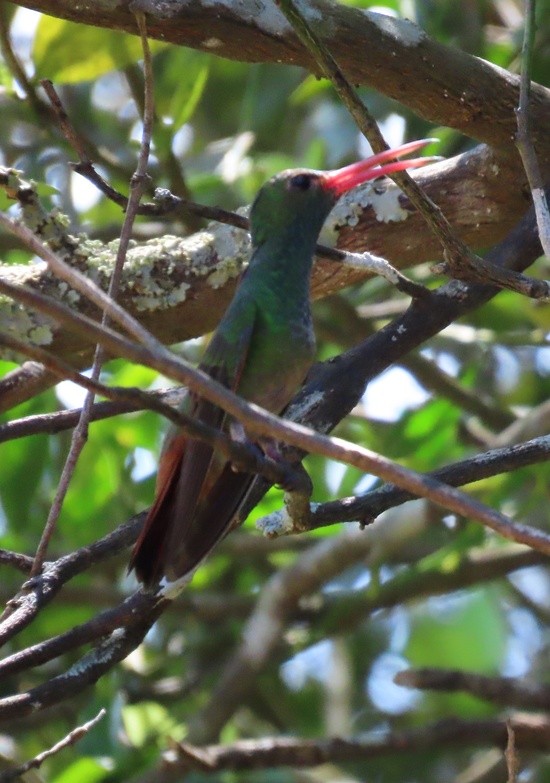
And the Crowned Woodnymph:
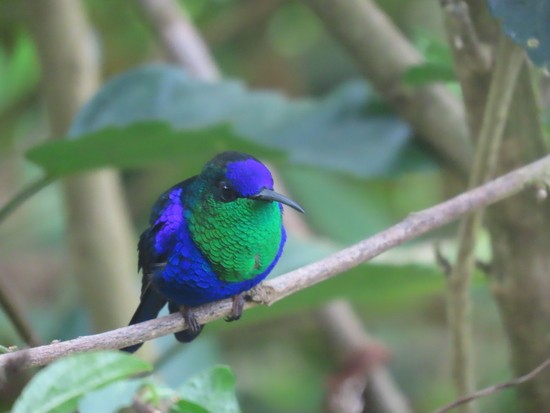
All of these are found from Central America to the Andes, although this is an endemic subspecies, the Colombian Violet-crowned Woodnymph.
The lodges also have fruit feeders which attract tanagers, such as this Palm Tanager:
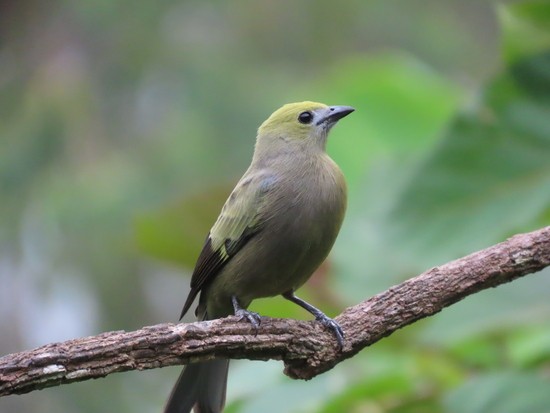
A Crimson-backed tanager:
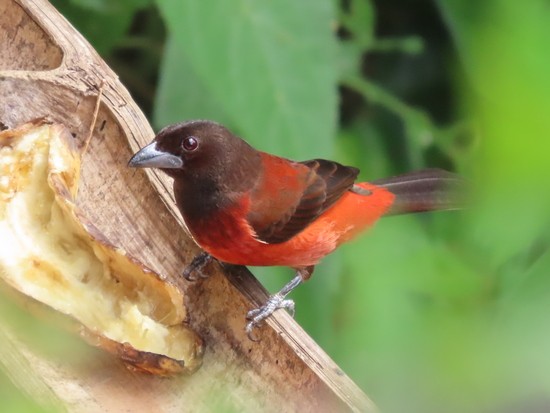
And a bird that used to be a tanager, Blue-naped Chlorophonia:
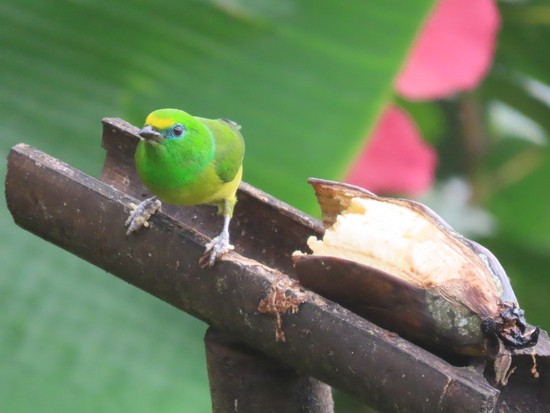
Turns out, chlorophonias (and the related euphonias) aren’t tanagers. They’re finches. This particular subspecies, with the yellow forehead, is endemic to the Santa Martas, and may be a full species.
We also connected with one of “our” birds, Tennessee Warbler:
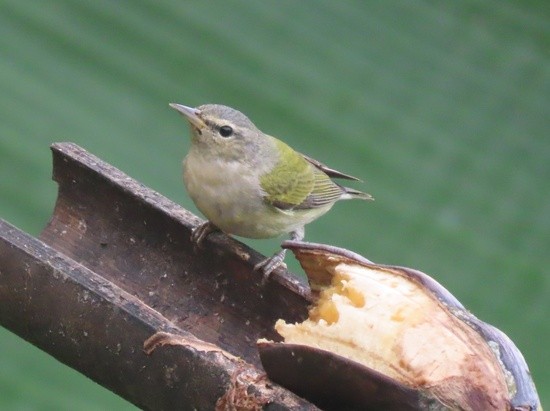
This was the most common warbler on the tour, and I probably saw several years’ worth of them on this trip.
Eventually we had to leave the feeders and head to the El Dorado lodge higher up in the mountains.
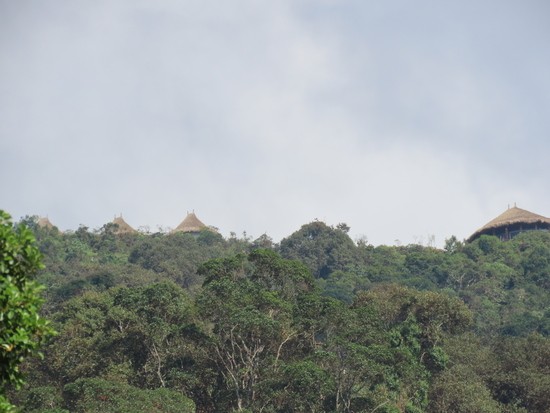
The isolation of the Santa Martas creates a lot of species that are only found there. In fact, there are over 20 species that are endemic to only the Santa Martas including several hummingbirds, a few warblers, two antpittas and an antbird, a couple wrens, two tapaculos, an owl, a parakeet, and more. And while we didn’t see all of them, we saw quite a lot.
As I noted above, the Santa Martas block the moisture heading west-to-east toward the Guajira Peninsula. That creates some great cloud forest:
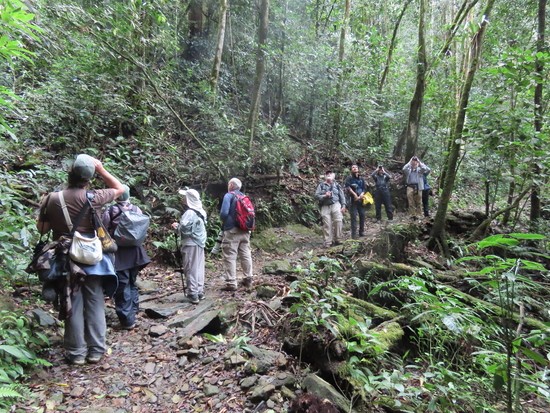
It also creates a lot of rain. We had one washed-out afternoon, a morning in the clouds, and a couple sessions dodging the rain (and sliding in the mud). So I don’t have a lot of pictures of the endemics, especially since many of them are skulkers. But we did see some goodies:
One of the prettiest was Masked Trogon:
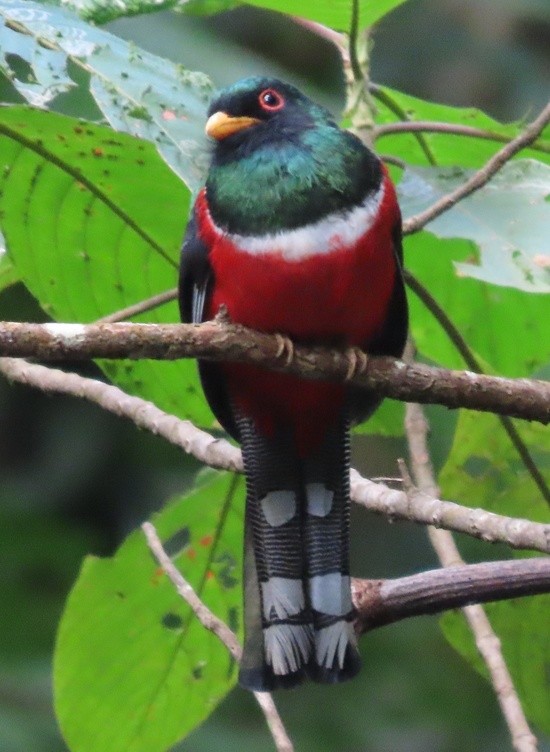
This is a male (the female is brown where the male is green). This species is found in the Andes from Colombia to Bolivia as well as the Santa Martas and some mountains in Venezuela.
Also in the trogon family is the White-tipped Quetzal:
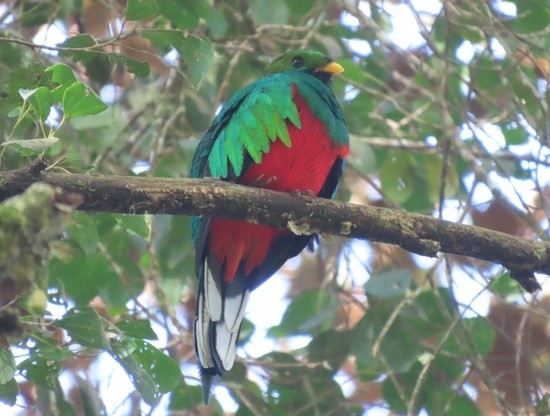
Quetzals aren’t usually so obliging, so it was nice to see this one out in the open right above the lodge parking area.
One of the endemics of the mountains is the Black-cheeked Mountain-tanager:
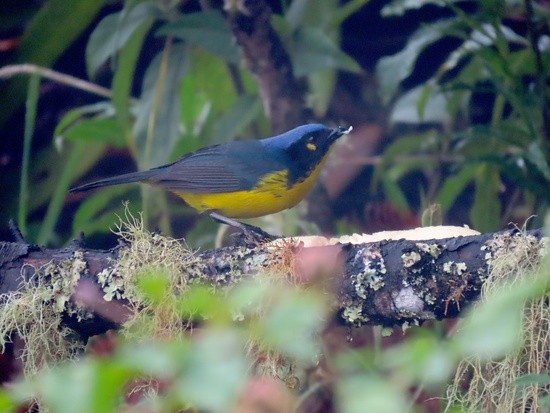
Mountain-tanagers are usually blue and yellow like this one. He was coming to a feeder at a little inn.
Endemic to the mountains of Northern Colombia and Venezuela is the Black-headed Tanager:
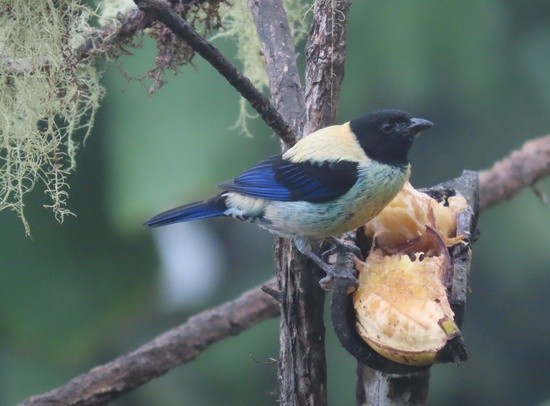
It was difficult to pull ourselves away from the feeders at the lodge where we ate lunch because of beauties like him.
A different kind of tanager is the White-sided Flowerpiercer:
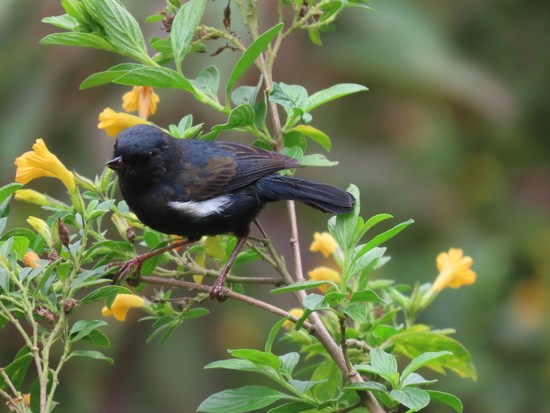
Unlike hummingbirds which suck nectar out of flowers with their long bills, flowerpiercers use a little hook on the tip of their bill to poke a hole at the base of the flower and get the nectar that way. White-sided Flowerpiercers are found at middle elevations in the Andes from Colombia to Peru.
Also endemic to Colombia and Venezuela (with a bit of Ecuador for good measure) is the Lazuline Sabrewing:
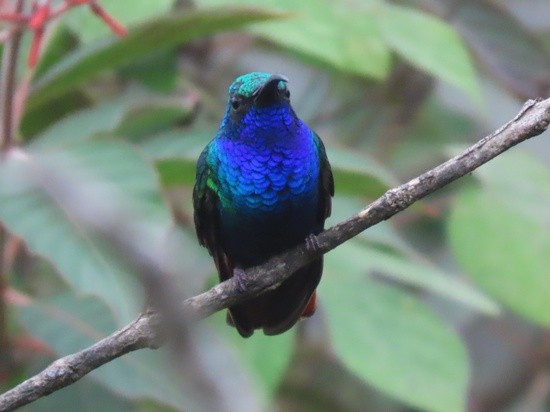
They’re quite uncommon and it was good to see this one. Many tours miss them.
Another mountain hummingbird is the Lesser Violetear:
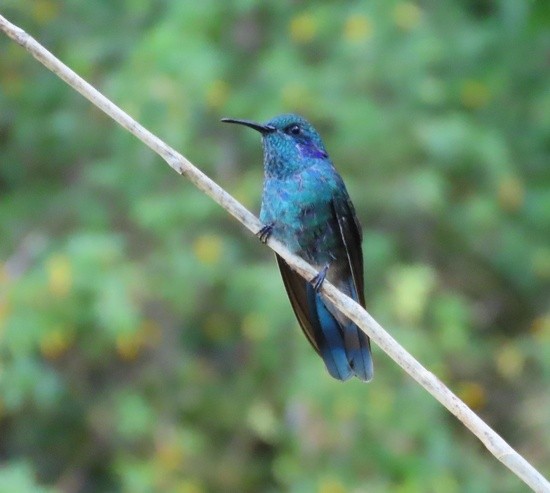
It used to be called Green Violet-ear, but that was split into the northern Mexican Violet-ear and the southern Lesser Violet-ear. Lesser Violet-ear is found in the mountains from Nicaragua all the way to Venezuela and Bolivia.
Not nearly as colorful, but much more range-restricted is the Band-tailed Guan:
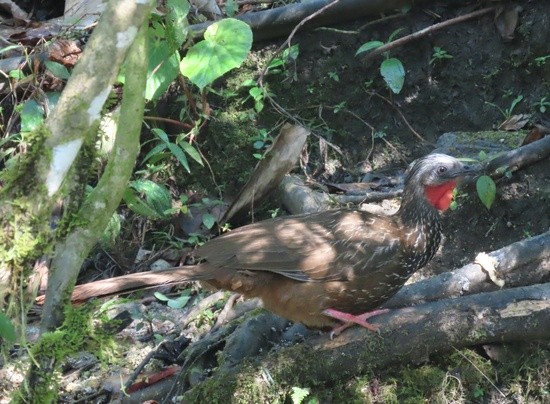
Guans are a kind of game bird related to pheasants, quail, and chickens. Band-tailed is a Colombia-Venezuela Endemic. This one was coming to a “feeder” at a small inn although we had a few outside the cabins at El Dorado Lodge.
Another Guan is the Sickle-winged Guan:
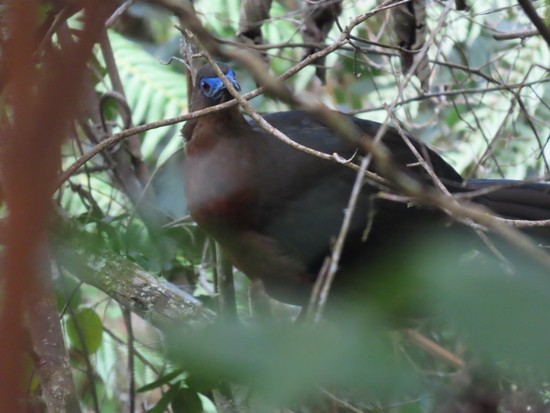
They’re found in the Andes from Colombia to Bolivia. The subspecies we saw is endemic to the Santa Martas.
A bird with a weird distribution is the Yellow-legged Thrush:

There are two separate populations – one in the Colombia-Venezuela region and the other in Coastal Brazil to Argentina. They’re not found anywhere in between!
And to wrap things up, one of the last birds I photographed on the tour, Swallow Tanager:
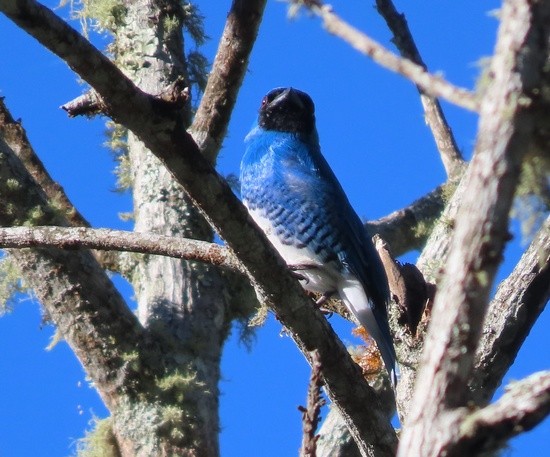
This is a male. The females are lime green. They’re found from Panama to SE Brazil and Northern Argentina. This was at the same inn where the guan was photographed.
——————
So that wraps up my little review of the tour to Northeastern Colombia.
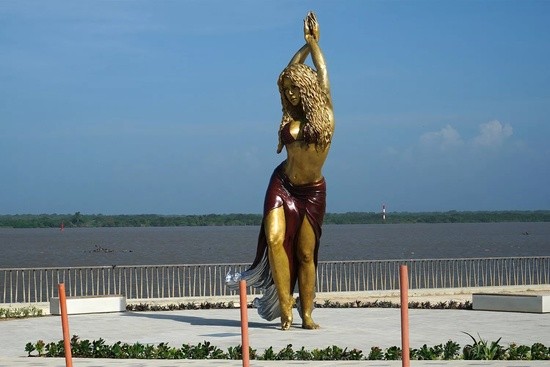
So what’s shaking in your neck of the woods?



